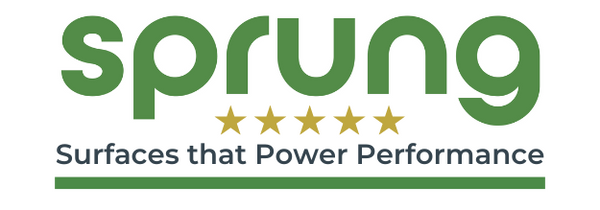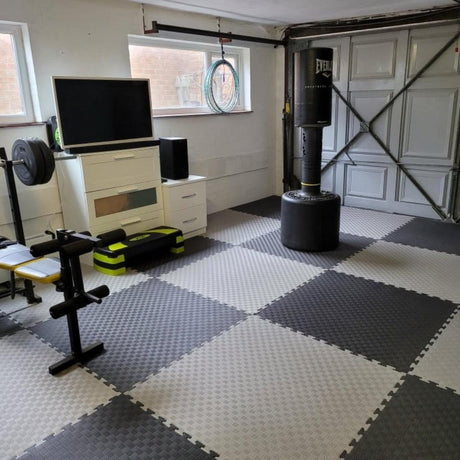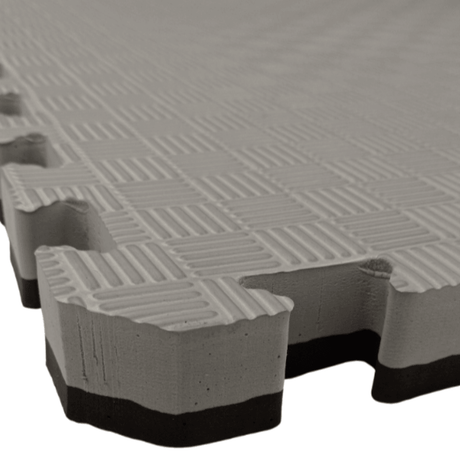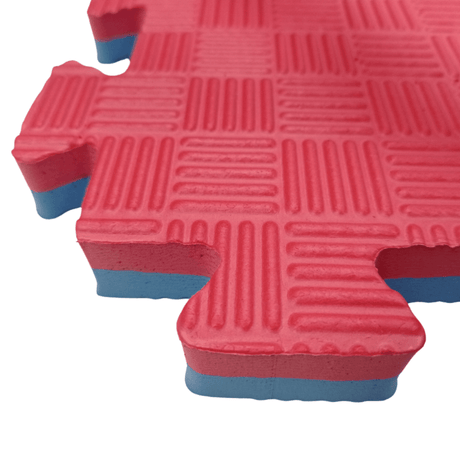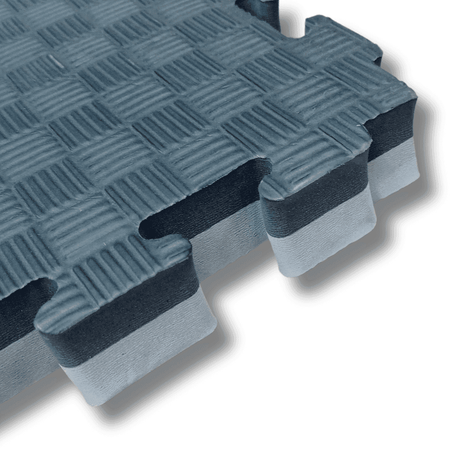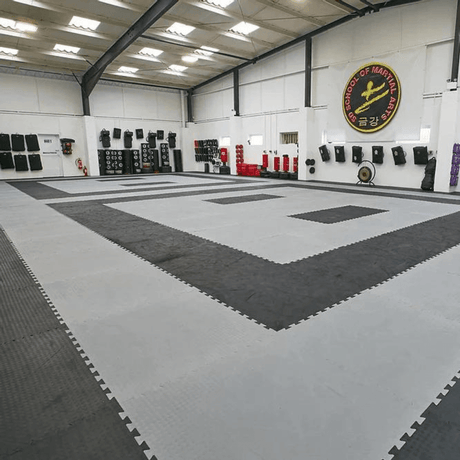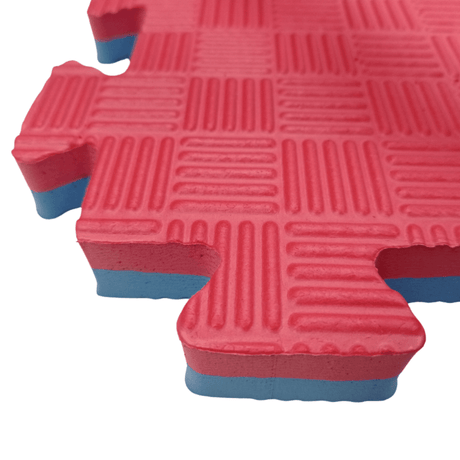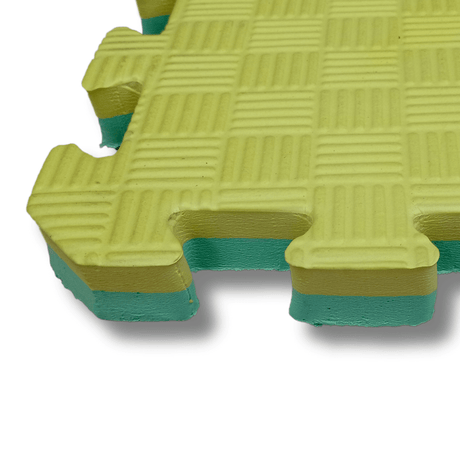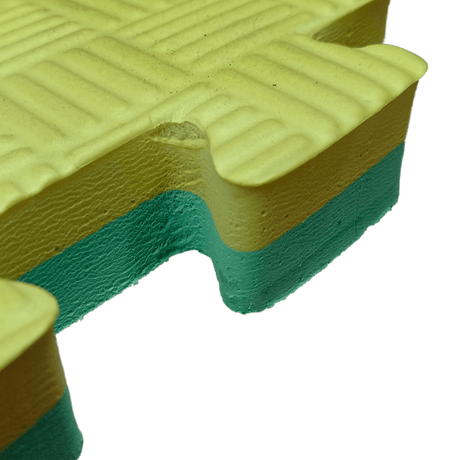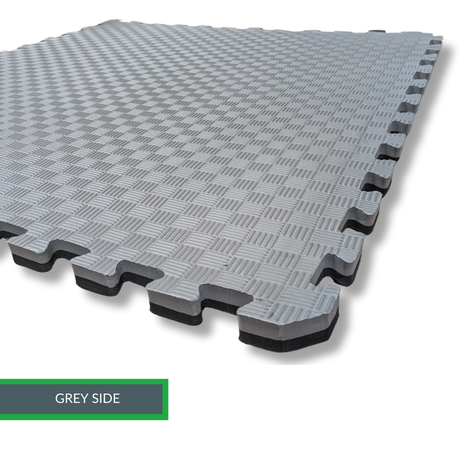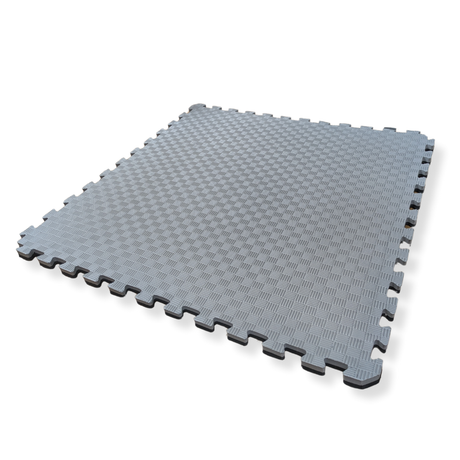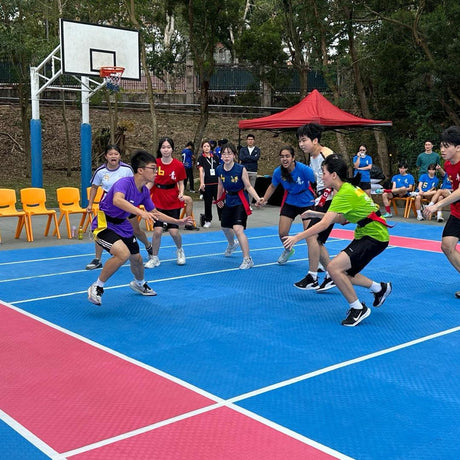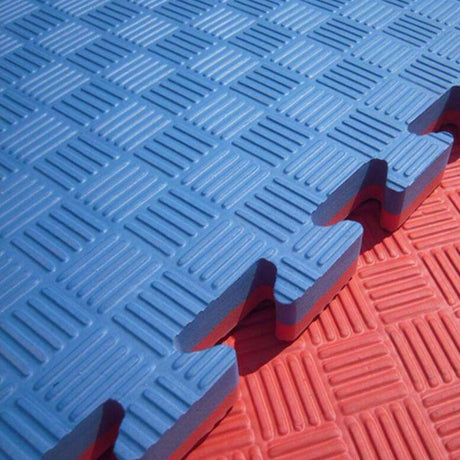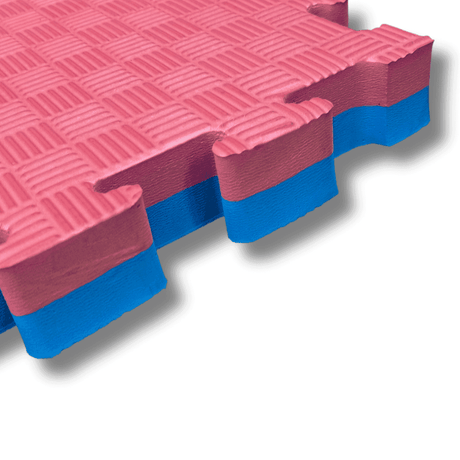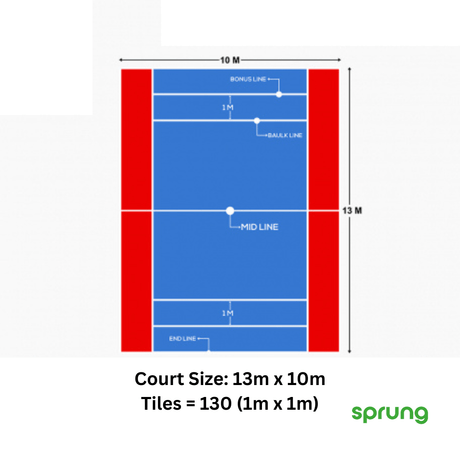26mm Premium Reversible EVA Tatami Foam Mats - Dual Yellow/Green
£18.45£23.06Unit price /Unavailable26mm Premium Reversible EVA Tatami Foam Mats - Dual Grey/Black
£21.99£27.49Unit price /UnavailableKabaddi Court Mats - 2 Thickness Options | Reversible Colours
From £20.99£26.23Unit price /Unavailable
What is Tatami Matting?
Tatami is a popular style of training mat that is quite common in Japan. Today, the mats have grown to be well-loved matting commonly used in homes and gyms.
Tatami comes from the verb tatamu, meaning to fold or pile. The name was chosen because tatami mats were initially thinner and could be folded or piled up.
Throughout history, tatami mats have been used since the 700s in Japanese history. With floors made of wood, tatami mats were used for certain reasons, including seating. Over the years their uses expanded until today when they are used in gyms around the world.
When it comes to gyms, tatami mats were first used in martial arts dojos. They are an important tool in spaces where there will be a lot of grappling and throwing, as they are versatile and durable while providing the protection needed for those types of exercises.
Increasingly, tatami matting is used in fitness facilities for light to medium exercises, studios for Yoga and Pilates, taekwondo mats, Gymnastics facilities and in Boxing and Martial Arts centres.
How is a Tatami Training Mat Made?
The basic structure of an original tatami mat is simple and is made up of three parts; the base, the cover, and the border.
- Base - The base is a multi-layered rice straw that is fastened tightly and compressed.
- Cover - The cover is made of natural rush.
- Border - The border meets with the cover at the edges where together they become the outer portion of a rectangle.
These are the main elements of tatami matting, however, there are other components used to make up the mats.
Modern tatami matting is simply rubber or foam flooring with tatami matting elements used as the surface for additional grip and traction in disciplines like Martial Arts, Boxing and Gymnastics.
What are the benefits of Tatami Matting
When used in homes, dojos, fitness studios and gyms, tatami mats provide multiple benefits:
Protection During Workouts
When used for martial arts or other types of grappling and or high impact workouts, tatami mats provide the protection needed. They offer pressure and shock absorption, which creates traction, comfort, and prevents joint impact and injury from throws, take downs, grappling, and any other high impact activity.
Durable Training Mat
Foam tatami matting is very durable and can have a long lifespan if maintained well. It can withstand repetitive impact, heavy use and high traffic while remaining resilient and comfortable to train on. It is important to opt for a thickness that will support your activities. Tatami tiles usually come in 20mm and 40mm for heavier use.
Training Mat with High Comfort
One of the main benefits of Tatami mats is comfort. Athletes and performing sportspersons prefer Tatami foam mats to usual gym surfaces such as rubber because the softer surface prevents friction burn while the cushioning and resilience of the foam mats have anti-fatigue properties as well as protecting their joints and ligaments from injury during training.
Creates a Clean, Aesthetic Look
A Tatami training mat has a clean, uniform look which is aesthetic and appealing. Many tatami mats come in bright colours, reversible designs and options for creating patterns and sports logos within the floor layout.
Easy to Maintain
Tatami mats are very easy to take care of and don’t require a great deal of effort to maintain. They can easily be wiped down and aired out for repeated use.
How are Tatami Mats Installed?
Tatami foam mats come in 2 different formats. The main type are puzzle shaped which interlock together whereas the other has a straight edge profile that can be glued. Foam tatami sheeting is also available although it is more difficult to handle and not as easy to install. Many tatami mat systems are glued down to the subfloor as a permanent setup and some users prefer to have their mats loose laid. Sizes tend to be 1m x 1m square although there are many different size/shape training mat options on the market.
What are the Types of Tatami Mats for Gyms?
There are different types of tatami mats that are typically used in home and commercial gyms or martial arts dojos. Each type of training mat has the same benefits of traditional tatami mats, however, there are a variety of features that accompany each.
- Interlocking Tatami Mats
- 40mm Reversible EVA Tatami Foam Mats
- Roll Out Tatami Mats
Tatami Mats UK
We supply a premium range of tatami mats for sale made from elite grade EVA foam known for its incredible density and high performance in MMA and Boxing as well as superior protection for kid's safe play. Whether you're creating an MMA studio from scratch, upgrading your child's play area or simply looking for an Eva foam exercise mat for home workouts, our Eva foam floor solutions deliver the protection and versatility you need.
Versatility
These high protection puzzle mats can be used for specialist sports such as Martial Arts, Boxing and Gymnastics, and they also serve well as karate mats for striking-based disciplines. Eva Foam is also a material widely used in children's play areas because of its exceptional cushioning and protective qualities. Suitable for home gym fitness as well as commercial spaces, Eva foam is one of the most versatile choices for all-round fitness, specialist sports and leisure purposes such as play and gaming. Eva foam mats work best indoors but can be transported outdoors in dry weather.
Thickness
They usually start in lower thicknesses for kids play mats (8mm to 13mm approx) and work up towards denser tiles for fitness and MMA such as 20mm and 40mm. Gymnastic mats will usually be around 40mm and above.
Colour Choice
Eva foam comes in a wide variety of bright or pastel colours such as bold green and yellow to create engaging play areas, or reversible dual options such as red/blue and black/grey for optional colour in your MMA studio. You can match your colours to suit your home decor, team colours or brand logo whatever the use or location.
Main Uses
Eva Foam Tatami Matting for Martial Arts, Boxing & Gymnastics
Eva foam tiles are the go-to material for these type of disciplines because they have superior shock absorption and anti-fatigue capabilities. The closed-cell foam cushions and protects users from injury while performing high impact, high intensity moves. Furthermore, our Eva foam flooring also has a Tatami textured surface which prevents slipping and skidding while users train. Eva foam has the ideal level of traction needed for athletes to optimise their performance and master their technique.
Eva Foam for Fitness
An Eva foam mat is a great option for light to moderate fitness activities such as functional training, lighter strength training, Yoga and Pilates as well as supporting gym equipment although it is advisable to use a thicker Eva foam mat such as 20mm and above for this purpose. See our colour options for the perfect foam workout mat layout.
Eva Foam for Play Mats for Outdoor Use
Children love to jump, bounce and tumble while they play indoors. They also love to make a mess! Eva foam tiles are one of the best play mat options on the market for protecting kid's from injury, preventing damage to your floors, while being low maintenance and simple to manage and move around (if loose-laid). Eva foam play mats will prevent skidding, sliding, hard bumps and falls while being soft and comfortable for young kids to crawl and explore on. Likewise, Eva foam play mats (suitable for indoors and moderate outdoors use) can create zones for different play areas within a larger playroom, support storage furniture and toys and adds a splash of colour and interest that kid's will love. Play mats made from PVC, rubber and artificial grass are also worth considering, but outdoor foam play mats remain a top pick due to their portability and shock-absorbing properties.
Other uses for Eva Foam
Aside from fitness purposes in home gym set-ups and commercial studios or play mats, Eva Foam is also popular for other uses. Eva foam matting is often used in horse stalls to protect livestock from injury as well as within some industrial and commercial buildings for additional safety as they prevent fatigue in workers who have to stand for long periods of time. Similarly, an Eva foam mat solution can be installed outdoors for temporary events and exhibitions as they are easily and quickly assembled and removed when needed.
Find out more by reading:-
Tatami Mats & All That - The Best Floor Options for Martial Arts
A Short Guide to Martial Arts Flooring
4 Interesting Workout Types - Fitness Flooring to Support Your Style

